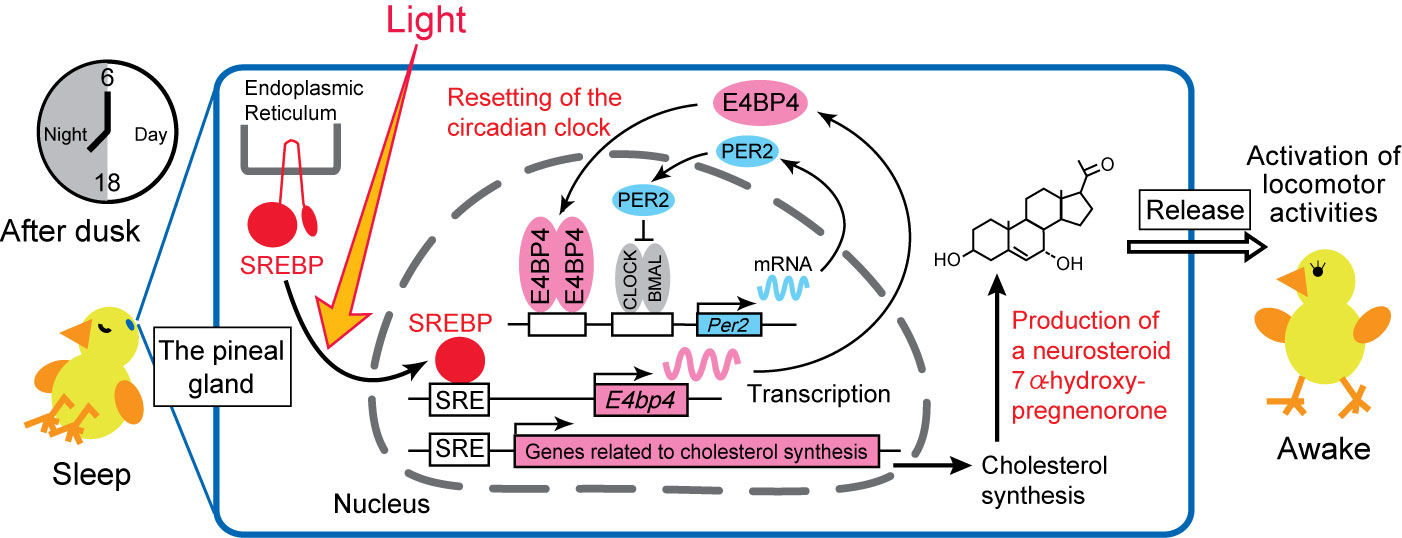Molecular mechanism underlying the light-dependent resetting of the circadian clock and activation of locomotor activities
The circadian clock is phase delayed or advanced by light when given at early or late night, respectively. Despite the importance of the time-of-day-dependent phase-responses to light, the underlying molecular mechanism is poorly understood. Here we found that SREBP transcription factor, which regulates a large group of cholesterol biosynthetic genes, activated transcription of E4bp4, a key regulator in the phase-delaying mechanism of the chicken pineal clock, in response to a light pulse given at early night. Furthermore, we revealed that light-activated SREBP stimulated production and release of a neurosteroid 7α-hydroxypregnenolone in the pineal gland, resulting in the activation of locomotor activities of chicks. These results demonstrate a novel endocrine function of the pineal gland, which has been known to release sleep-related hormone melatonin.
Program member
Yoshitaka Fukada (Department of Cell Biology and Anatomy, Graduate School of Medicine)

